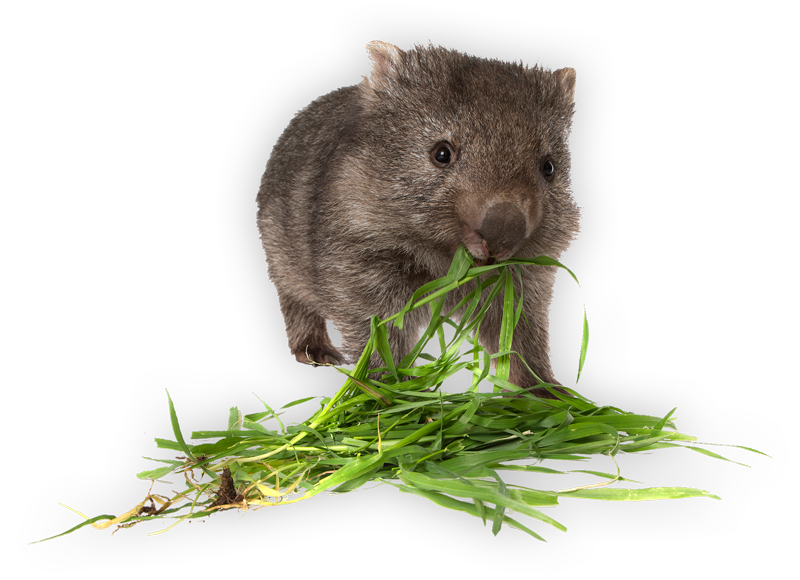What is mange?
The disease
Sarcoptes Scabiei is a microscopic parasitic mite that causes scabies in humans and mange in dogs. It is not a naturally occurring parasite, and is believed to have come here with the first settlers and their livestock. It severely affects wombats and currently poses the biggest threat to their survival. Once contracted, it is a terminal diagnosis for an individual wombat unless treated.
The mite burrows under the skin and tunnels into the hair follicles, resulting in severe itching, hair loss, thick scabs and an emaciated condition. Mites block the wombat’s eyes and ears, so that it can lose its sight and hearing. Wombats in this condition have a hard time getting enough nutrients; they become very thirsty and lose body heat. Eventually, the hard plaques crack open, exposing raw sores which can become fly-blown, and secondary infections severely compromise the wombat, leading to an agonising death.
How to tell if a wombat has mange
Wombats with mange are typically seen out in the daytime (note that wombats in cooler areas, such as Cradle Mountain, are also out in the daytime, but that does not mean that they have mange). Mangy wombats are often seen in a culvert or near a water source as the infestation causes them to become very thirsty and they have to constantly graze to compensate for the loss of body heat. Mangy wombats often have a white ring around their eyes, and appear to have stripes on their sides where crusty scabs form, and the hair falls out. The only hair left is often along the centre of the back, which makes the wombats look as if they have a strange hair style. Scabs are often seen on the legs and ears as well. Generally the body condition of a mangy wombat looks very poor and emaciated. Wombats that have been attacked by other wombats, typically, have wounds on top of their backs, and necks. Wounds on these parts of a wombat do not indicate mange. That’s why a photo is very useful to determine the course of treatment applicable.
An animal welfare issue
This is an extreme animal welfare situation that would not be tolerated by the public. If it were a domesticated animal neglectfully left to die without treatment, but our wombats are largely suffering in silence.
Population crashes have generally slipped by almost unnoticed until the general public were alerted by the localised extinction of wombats at Narawntapu National Park in northern Tasmania. There were only a few surviving individuals out of a population that had previously numbered in the hundreds. A similar crash in wombat numbers has also occurred in the West Tamar region at Greens Beach, Kelso and Clarence Point, where there is only a small remnant population left hanging on.
Mange has been reported state wide, with community sightings of suffering wombats coming in from the northeast, along the east coast, southern midlands, central highlands, Derwent Valley and the northwest region around Waratah, just to name a few. Unfortunately, mange has also been reported at Cradle Mountain.
What can be done?
The good news is mange is treatable in individual wombats!
Wombat Rescue Tasmania volunteers operate under a permit system issued from The Mange Management Inc. and DPIPWE guidelines. Many volunteers are working in the field around Tasmania to promote and deliver the treatment required for individual wombats in the wild wherever possible instead of euthanasia. The effects of mange are reversible, and after 12 treatments, the scabs drop off, hearing and sight is restored and the wombat’s fur grows back!
However, reinfestation is often highly likely, so constant monitoring is necessary to ensure that treated wombats remain healthy.
Unless eliminated, wildlife carers view sarcoptic mange as the key threat to the long-term viability of the wombat species, especially given other current threats such as climate change and habitat loss, are causing crowded conditions that are ripe for mange mites to spread. In the absence of any government task force to deliver a treatment program, it has been left to the public to respond to this crisis.



Keep In Touch